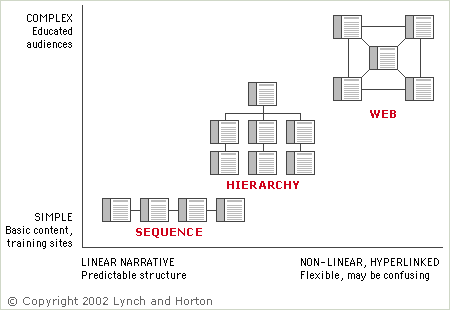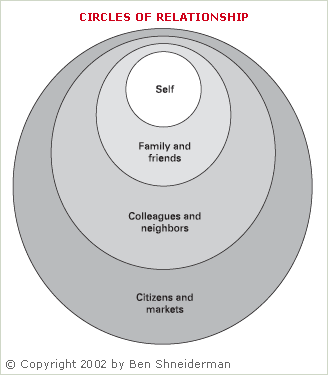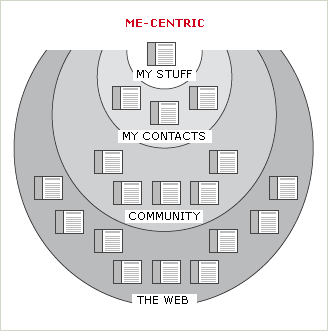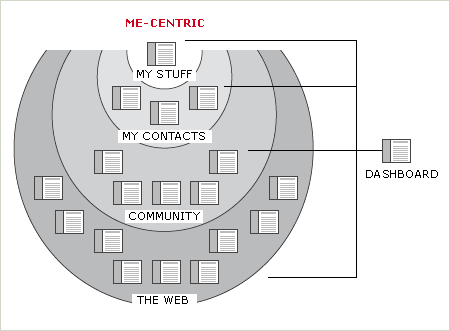In Web Style Guide, Patrick Lynch and Sarah Horton describe three basic structures that “govern the navigational interface of a Web site and mold a user's mental models of how information is organized.” These three information structures are sequences, hierarchies, and webs.

Sequences “may be chronological, a logical series of topics progressing from the general to the specific, or alphabetical, as in indexes, encyclopedias, and glossaries.” Hierarchies “are particularly suited to Web site organization and very familiar in corporate and institutional life.” Webs “mimic associative thought and the free flow of ideas, allowing users to follow their interests in a unique, heuristic, idiosyncratic pattern.”
Though every Web application tends to have some sequential organization (registration flows or wizards), some hierarchical organization (help systems) and some Web-like linking, the more functional productivity applications I’ve helped design predominately employ hierarchical information structures. People are mostly using these programs to get specific things done like data management, e-commerce, reporting, etc. An understandable and familiar information structure helps them achieve their goals quickly and easily.
On the other hand, the more entertainment or community-focused sites I’ve helped design tend to be primarily organized as a web. Lots of links between content enables people to explore freely and pivot a data set along many different parameters. Found a piece of content you like? Pivot the data set by the author, category, tag, rating or more. A web-like information structure enables you to follow whatever path meets your needs at the time.
Lately I’ve become more attuned to an increasing focus on identity within these Web-like information structures. Many social applications have a strong personal component. Despite the inclusion of a personalized view of content and actions, these applications still lean toward either hierarchical or web information structures as their primary organizational structure.
Looking at Ben Schneiderman’s circles of relationship (PDF) presents a potentially different way of “governing the navigational interface of a Web site and molding a user's mental model of how information is organized”: a me-centric way.

This type of information structure is organized by the relationships between people (and thereby content) within a Web site. Me and My Stuff is the central hub. My Contacts (content from friends and family), Community (content from all registered members of a site), and the Web (content outside the site) govern the rest of the site’s navigational interface and information organization.

Within such a structure there may be a need for a dashboard that provides a horizontal view through the relationship layers (mostly snapshots of and links to content) to encourage exploration and highlight features.

Though it could serve as an effective primary organization model for social applications, a Me-centric structure is likely to contain a mix of multiple information structures like the intermingling of Sequences, Hierarchies, and Webs we see in most Web sites today.